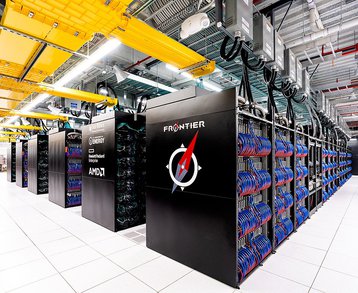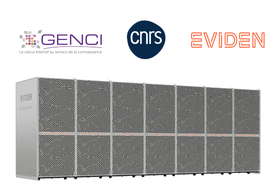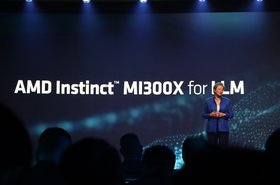The latest edition of the Top500 list of the world's fastest supercomputers has been revealed, with Frontier holding onto its top spot for another six months.
For the time being, Frontier is also the only exascale system recognized in the list.
Housed at the Oak Ridge National Laboratory, Frontier has held number one since the June 2022 list. The supercomputer has an HPL (high performance Linpack) benchmark score of 1.194 exaflops, uses AMD Epyc 64C 2GHz processors, and is based on the HPE Cray EX235a architecture. The system has a total of 8,699,904 combined GPU and CPU cores, and uses HPE's Slingshot 11 network for data transfer. The supercomputer has also been awarded 8th place on the Green500, a biannual ranking of supercomputers by energy efficiency.
The second place spot has been taken up by the new Aurora system which is housed at the Argonne Leadership Computing Facility in Illinois, US.
Aurora received an HPL score of 585.34 petaflops, but this was based on only half of the planned final system. In total, Aurora is expected to reach a peak performance of over two exaflops when complete.
The Aurora supercomputer is built by Intel and is based on the HPE Cray EX-Intel Exascale Compute Blade, using Intel Xeon CPU Max series processors (Aka Sapphire Rapids) and Data Center GPU Max Series accelerators, and relies on HPE's Slingshot-11 network interconnect.
The number three spot has been awarded to Eagle, installed in the Microsoft Azure Cloud. With an HPL score of 561.2 petaflops, this is the highest ranking a cloud supercomputer has ever reached. The Eagle system is based on Intel Xeon Platinum 8480C processors and Nvidia H100 accelerators.
Fugaku, previously holding number two, has fallen to number four on the list. Based in Kobe, Japan, Fugaku has an HPL score of 443.01 petaflops, and is the highest-ranked system outside of the US.
Fifth place goes to LUMI in Kajaani, Finland, with an HPL of 379.7 petaflops. LUMI has undergone several upgrades, and its HPL has increased from 309.1 petaflops in the June 2023 list.
Sixth through tenth place is as follows: Leonardo, in Cinceca, Italy; Summit, in Tennessee, US; MareNostrum 5 ACC in Barcelona, Spain; the Eos Nvidia DGX superpod in the US; and Sierra at the Lawrence Livermore National Laboratory in California.
Other notable trends in the latest Top500 list include the prevalence of Intel Sapphire Rapids processors, which have been used in 20 systems across the whole list, and five in the top 10 (Aurora, Eagle, Leonardo, MareNostrum 5 ACC and Eos).
The US has 161 supercomputers featured on the list, while China has 104 - taking first and second in the race for the countries with most computing power.
Finally, in terms of interconnect, Ethernet remains the most used, with Infiniband coming at a close second. Omnipath has third place, while custom interconnects retained fourth.
While Frontier remains the only recognized Exascale system, several others are underway.
In the US, Aurora is set to exceed Frontier, and a two exaflop system, El Capitan, is being installed at the Lawrence Livermore National Laboratory.
The UK is developing an Exascale supercomputer which will be housed at the University of Edinburgh, with the first phase of installation set to begin in 2025.
The Jules Verne consortium in Paris, France, is set to host another unnamed exascale computer as part of the European High-Performance Computing Joint Undertaking (EuroHPC JU).
Another EuroHPC JU supercomputer, Jupiter, will be housed in the Forschungszentrum Jülich facilities in Germany and is expected to be Europe's first exascale system.
In 2022, it was revealed that the Chinese government may be set to operate as many as 10 exascale supercomputers by 2025. According to reports, the country secretly set up an exascale system in 2021 and already has a second known as Tianhe-3. Neither of these has been verified by the Top500 list.






